Claim: Photographs show a foot injury caused by stepping on a broken CFL bulb.
Example: [Collected via e-mail, October 2011]
Mercury Exposure--Safety precaution needed!
ENERGY SAVER GLOBE –MERCURY EXPOSURE
What happened.
On the 10th February 2011 the energy saver globe fused at the home of the IP. He did not wait for the globe to cool down, standing on a chair with a piece of cloth and remove the energy saver globe. Due to the heat of the energy saver globe he dropped the globe. As the globe fell on the floor it “explode” (brake). As he descend from the chair he stepped into the broken glass and exposed mercury powder.
The IP was admitted to hospital for treatment of the cuts. He spent two weeks in ICU and at one stage it was feared that his foot need to be amputated. Currently his foot is connected to a vacuum pump to remove continuously dead tissue. Long road of recovery is awaiting him.
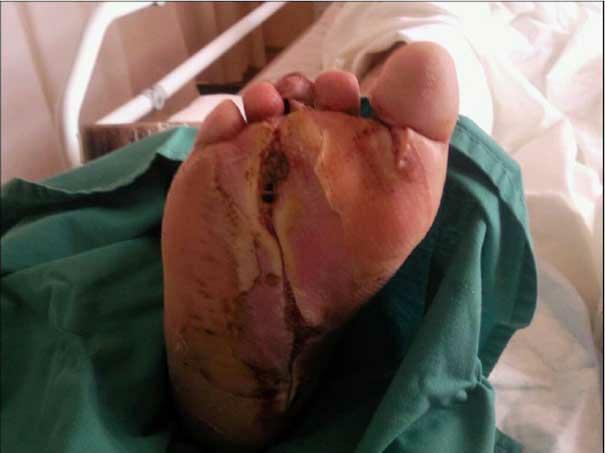
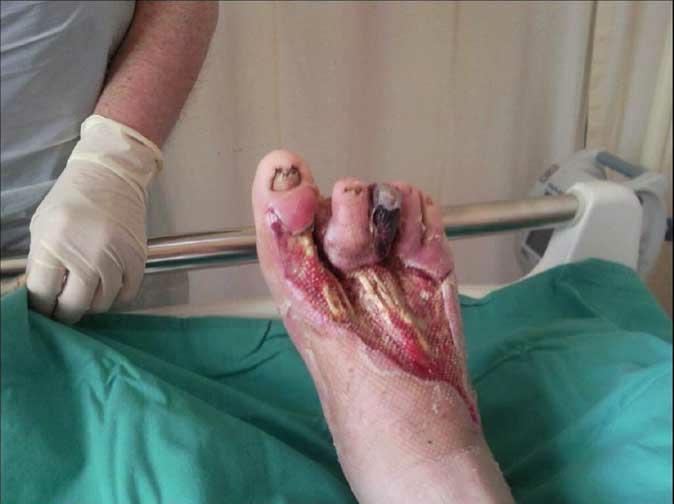
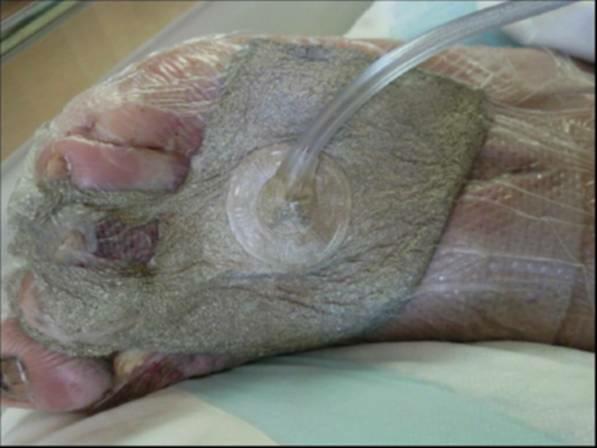

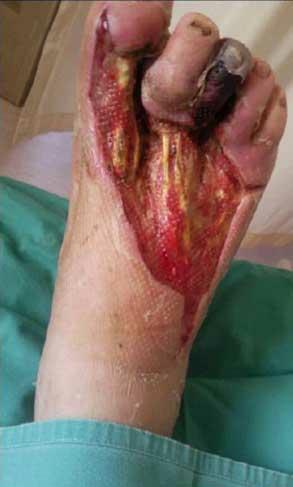
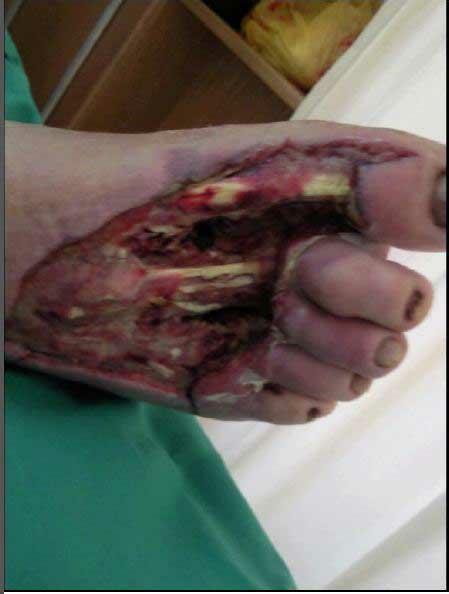
Variations: In April 2012 these photographs were circulated as part of a Salisbury [Maryland] Fire Department training newsletter. The Salisbury Fire Department denies authorship of the piece and admits to having been hoaxed, saying:
Although attempts were made to verify the validity of the information, initial Internet searches provided no compelling evidence to dispute the information. We now believe that the information we used as the basis for our April 2012 Newsletter was an Internet-falsehood which started circulating numerous years ago and had an ulterior motive and purpose.
Origins: As we discuss in another article, energy-saving compact fluorescent lamps (CFLs) contain small amounts of mercury, and the remnants of a broken CFL bulb should therefore be handled and disposed of carefully according to recommended safety procedures. (Contrary to some wilder rumors, however, a single broken CFL bulb does not need to be dealt with by an environmental
In March 2011, we began receiving the photographs of a gruesome foot injury displayed above, with accompanying text indicating the photos depicted the aftermath of someone's stepping on a broken CFL bulb. According to the text description, the hospitalized patient spent
two weeks in Intensive Care, faced possible amputation of his foot, had his foot "connected to a vacuum pump to remove continuously dead tissue," and was facing a long recovery period.
We do not know the origins of these photos or the nature of the injury they depict, but it seems unlikely they're the result of stepping on a broken CFL bulb. Mercury has long been used in a variety of industrial, medical, and home applications, and the effects of mercury poisoning are well documented, but we could find no information documenting that the infiltration of a very small amount of mercury into a wound would cause the extensive tissue necrosis displayed in these photos. (Even a 2000 medical journal article reviewing mercury exposure and cutaneous disease describes nothing like the phenomenon shown in these pictures.)
It's possible that what these photographs actually capture is a case of necrotizing fasciitis, a severe type of infection that can destroy muscles, skin, and underlying tissue. Necrotizing fasciitis is a bacterial infection, however, not something caused by exposure to mercury.
Last updated: 18 May 2012
